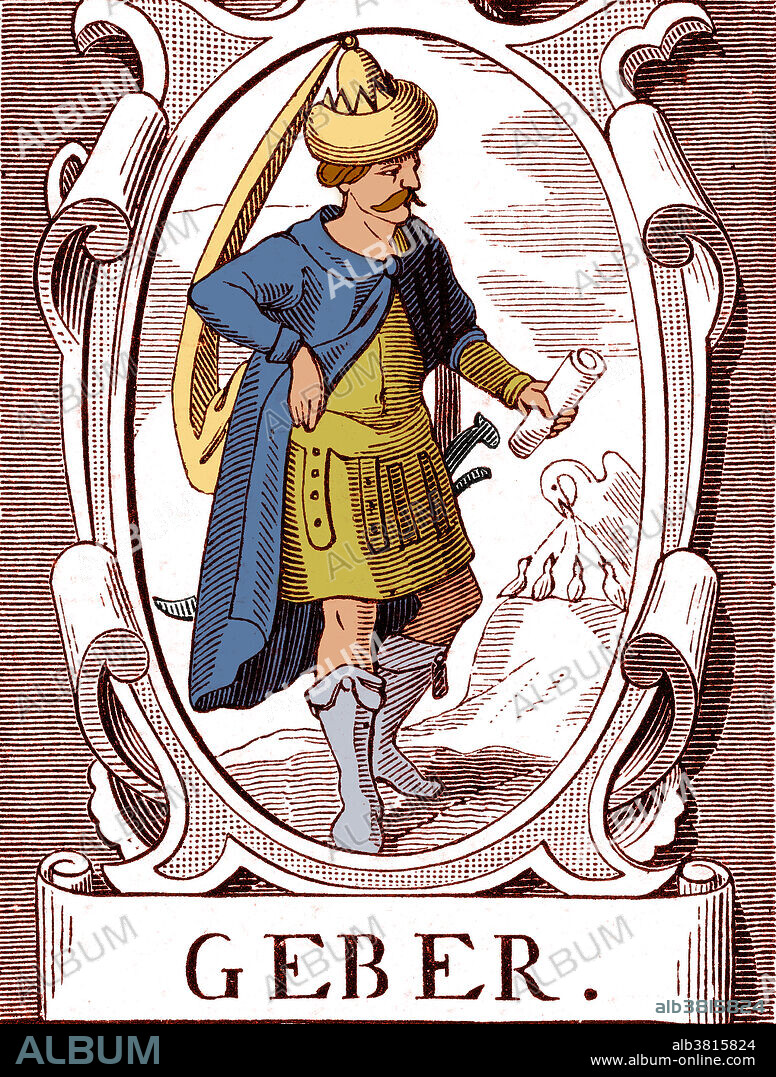alb3815824
Geber, Arab Polymath

|
Add to another lightbox |
|
Add to another lightbox |



Title:
Geber, Arab Polymath
Caption:
Abu Musa Jabir ibn Hayyan also known as Geber (721-815) was a prominent polymath: a chemist and alchemist, astronomer and astrologer, engineer, geologist, philosopher, physicist, and pharmacist and physician. Born and educated in Tus, located in Iran's Persian heartland of Khorasan, he later travelled to Kufa. Jabir is held to be the first practical alchemist. Jabir is mostly known for his contributions to chemistry. He emphasized systematic experimentation, and did much to free alchemy from superstition and turn it into a science. He is credited with the invention of many types of now-basic chemical laboratory equipment, and with the discovery and description of many now commonplace chemical substances and processes such as the hydrochloric and nitric acids, distillation, and crystallization that have become the foundation of today's chemistry and chemical engineering. His books strongly influenced the medieval European alchemists and justified
Credit:
Album / NYPL/Science Source
Releases:
Model: No - Property: No
Rights questions?
Rights questions?
Image size:
2861 x 3774 px | 30.9 MB
Print size:
24.2 x 32.0 cm | 9.5 x 12.6 in (300 dpi)
Keywords:
8TH CENTURY • 9TH CENTURY • ABU • ALCHEMIST • ALEMBIC • ARAB • ARABIAN • ART • ARTWORK • ASTROLOGER • ASTRONOMER • CELEBRITY • CENTURY • CHEMIST • CHEMISTRY • COLOR • COLOUR • CRYSTALLISATION • DISTILLATION • DOCTOR • DRAWING • EIGHTH CENTURY • ENGINEER • ENGRAVING • ENHANCE • ENHANCEMENT • EXPERIMENTATION • FAMOUS • FIGURE • FIRST • GEBER • GEOLOGIST • HAYYAN • HISTORIC • HISTORICAL • HISTORY • IBN • ILLUSTRATION • IMPORTANT • INVENTOR (MALE) • INVENTOR • ISLAMIC • JABIR • MEDICAL • MEDICO • MUSA • MUSAS • MUSE • MUSES • NINE MUSES • NOTABLE • PEOPLE • PERSIAN • PERSON • PERSONALITIES • PERSONALITY • PHARMACIST • PHILOSOPHER • PHYSICIST • POLYMATH • SCIENCE • SYSTEMATIC • WELL-KNOWN
 Pinterest
Pinterest Twitter
Twitter Facebook
Facebook Copy link
Copy link Email
Email

